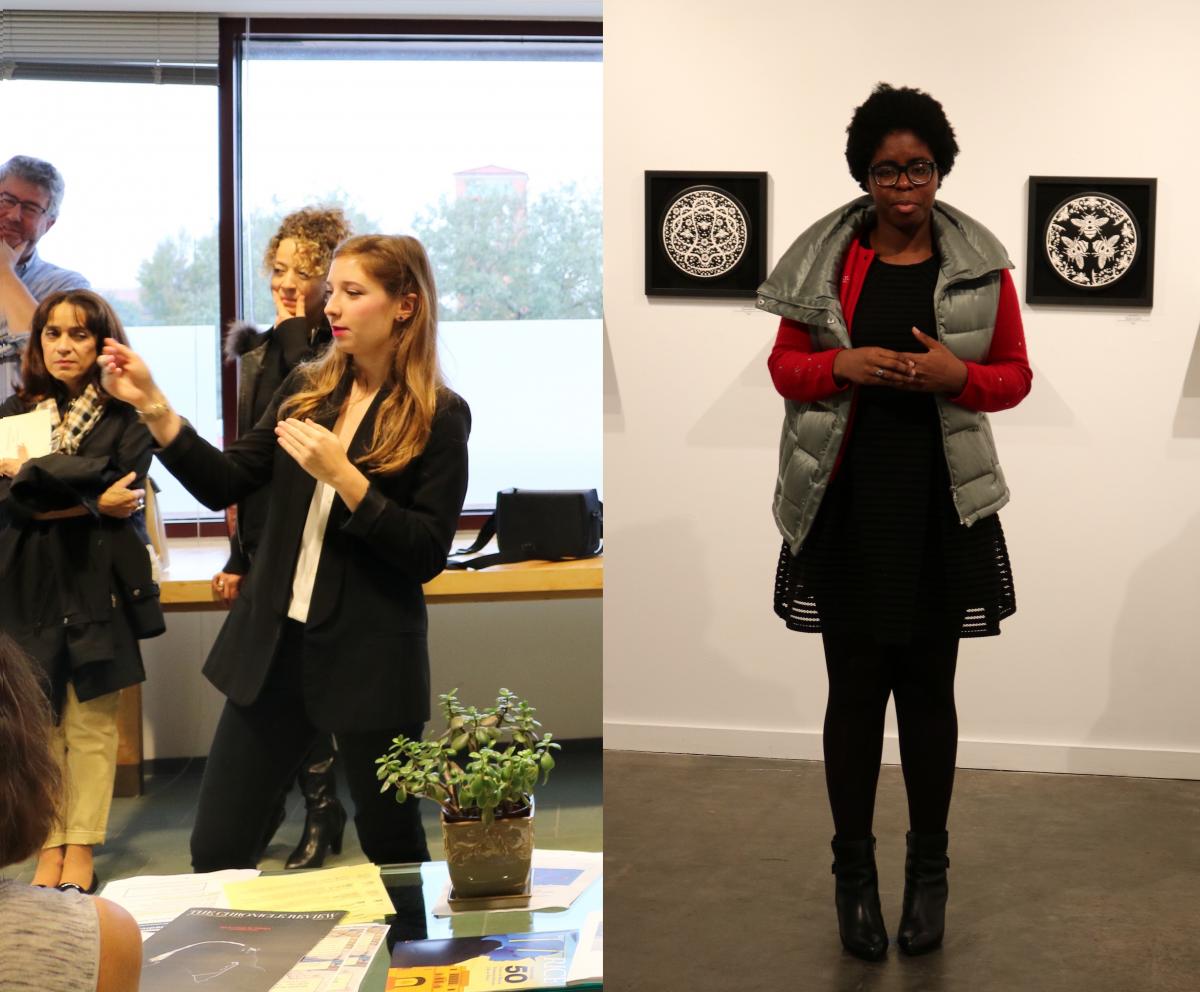The HRC's practica program just completed its second semester, with students working at the Institute for Spirituality and Health, the Texas Medical Center Library's McGovern Historical Research Center, Archway Gallery, and the Menil Collection. This semester was particularly exciting because our two cultural heritage practica students created experimental installation pieces for their final projects, based on their semester's research (we will be writing in January about our medical humanities practica students, when some of their work is made public).
Edna Otuomagie (right in the above photo) worked with Archway Gallery this semester to record the member-owned gallery's oral history. She interviewed dozens of artists about their work, their lives, and this community institution that they are members of. The audio archive that Edna produced turned into a rich cross-section of the community, filled with different personalities' individual and collective stories. Her final project turned this history into a work of art in its own right: Edna built an audio installation at Archway, highlighting some of her longer artist interviews. Speakers mounted around the gallery fill the space with the voices of the artists, and visitors can hear about Archway and the individual artists' processes, as they look at the work. This past Friday, December 16, Archway hosted an opening for Edna's work; photos from the event are included below.



Reagan Williamson (left in the photo at the top of this post) built on her work in Rice Professor John Hopkins' HART 312 class in spring '16, by helping with this fall's Collections Analysis Collaborative symposium, hosted at and using the holdings at the Menil. The symposium's focus on the cultural and scholarly import (as well as thorny politics) of provenance research in museums prompted Reagan to think more about how this work, of tracing an artifact's complex and often incomplete history, could be made more visible to the public. Her experimental solution was to explode the museum didactic of a specific object held at the Menil, an Etruscan funerary lion. By showing how secondary research and archival documentation go into producing the apparently unmediated experience of things that visitors have at the Menil, she used her exhibit (hung in the HRC) to ask questions about museum politics and the public humanities.





